Nestled beneath the red soil of Bazan, the underground tunnels of Go Thi Thung in Phu Yen await your discovery. Here, amidst the cool plateau air, you’ll uncover a system of historical tunnels and immerse yourself in the vibrant atmosphere of the highlands. What’s more, you’ll have the opportunity to experience the traditional horse racing festival. Let’s delve into this unique destination with Vietnampeace.com!
1. Introduction to Go Thi Thung Underground Tunnels, Phu Yen
1.1 Overview of Go Thi Thung Underground Tunnels, Phu Yen
Situated over 400 meters above sea level, Go Thi Thung in Phu Yen lies beneath the Bazan’s red soil. Stretching 5 kilometers from north to south and 4 kilometers from east to west, this area hosts the traditional folk festival of Go Thi Thung Horse Racing during the Tet holidays.
In 2009, Go Thi Thung Underground Tunnels, Phu Yen was recognized as a national historical relic by the Ministry of Culture, Sports, and Tourism. Alongside the Cu Chi Tunnels in Ho Chi Minh City and Vinh Moc Tunnels in Quang Tri, the Go Thi Thung Underground Tunnels are one of Vietnam’s three major tunnel systems.
1.2 Historical Background of Go Thi Thung Underground Tunnels, Phu Yen
During the intense battles of the Vietnam War, the United States heavily deployed troops to the southern region. In the An Xuan plateau, fierce fighting ensued, where our soldiers and people achieved remarkable victories, contributing significantly to the overall success of the “People’s War” on the southern battlefields.
In 1964, facing the increasing strength of the enemy, the Military Command of Region V decided to excavate the Go Thi Thung Underground Tunnels in An Xuan, An Dinh, and An Nghiep communes. This tunnel system was constructed and explored during Vietnam’s resistance against foreign invaders. Initiated on May 10, 1964, under the command of Tran Suyen, the provincial Party Secretary, and executed in secrecy, primarily at night, the Go Thi Thung Underground Tunnels were completed in over a year.
Upon completion, the tunnels spanned 1,948 meters, with a depth of 4.5 meters and a width of 0.8 meters. The entire system comprised 486 wells, with wooden covers placed atop the wells, and every 20 meters, a side entrance provided camouflage. Guard posts with observation towers were erected above the tunnels, surrounded by an intricate network of zigzagging transportation routes. During enemy attacks, our forces would emerge to engage and then retreat into the tunnels, remaining undetected, with the local populace safeguarding the secrecy of their operations. Though remnants of war such as bomb craters, minefields, and ammunition littered Go Thi Thung, today, the landscape is gradually greening, with new homes emerging and the lives of the local people improving.
2. Directions to Go Thi Thung Underground Tunnels, Phu Yen
Starting from Tuy An, take the inter-district road over the iron bridge in An Nghiep commune. As you ascend through the small mountain passes, you’ll reach a flatland approximately 400 meters above the O Loan lagoon, where the renowned Go Thi Thung Underground Tunnels of Phu Yen await. Here, amidst the Bazan’s red soil, you’ll relish the spacious surroundings and embark on a meaningful journey through Phu Yen.
3. Activities at Go Thi Thung Underground Tunnels, Phu Yen
3.1 Impressions of Visitors at Go Thi Thung Underground Tunnels, Phu Yen
Today, as you visit the Go Thi Thung Underground Tunnels in Phu Yen, few may realize the fierce battles over 40 years ago. Beneath the surface lies a tunnel system crafted by our people during tumultuous times.
The road to Go Thi Thung Underground Tunnels has been paved for easy access. Mentioning this destination, many will recall a nationally renowned tunnel system and the annual traditional horse racing festival held on Go Thi Thung every Lunar New Year’s Day. It’s the only horse racing festival in the Central and Central Highlands regions. Here, you’ll savor various local delicacies, witness historical relics from past battlefields, and enjoy the refreshing highland climate. Despite the challenges the local community faces, their hospitality remains unwavering, welcoming you to stay longer.
3.2 Exciting Activities at Go Thi Thung Underground Tunnels, Phu Yen
Here, amidst vast and refreshing landscapes, lies an entire historical tunnel system beneath the earth. This area is home to the traditional spring horse racing festival—a land steeped in the cultural richness of folk festivities. What was once a significant historical site is now a cherished destination for travelers. What could be more fulfilling than delving into the Go Thi Thung Underground Tunnels in Phu Yen? During springtime, ordinary horse riders transform into gallant knights atop their steeds, typically used for transporting goods, now participating in the festival. It’s an annual tradition where the people of An Xuan commune and neighboring areas come together for the Go Thi Thung Horse Racing Festival in Phu Yen.
While here, you can also visit Uncle Ho’s Church. To reach Uncle Ho’s Church, you’ll traverse a 10-kilometer forested road shaded by lush trees. The church, built in traditional Vietnamese architectural style, offers a calm, spacious sanctuary harmonizing with the surrounding greenery and mountains. Two sycamore trees planted on the day of Uncle Ho’s departure to the eternal realm now provide shade and comfort to those who come to honor the beloved leader of our nation.
3.3 Conservation Policies for Go Thi Thung Underground Tunnels
To preserve this historical site, the Tuy, An district People’s Committee has initiated plans for restoration and development, with a total investment nearing 1 billion Vietnamese dongs. This investment covers the construction of two sheltered tunnel entrances, three well covers, pathways surrounding the site, restoration of 95 tunnel sections, and installation of 10 directional signs within the area. According to the Department of Culture, Sports, and Tourism, proposals have been submitted to the Ministry of Culture, Sports, and Tourism to fund Phase 2 projects to enhance Go Thi Thung Underground Tunnels as a historical monument. These projects include facilities for management and exhibition, restroom facilities, and electrical and water systems, and are expected to commence in 2014.
In the subconscious minds of the people of An Xuan commune, there remains a dream that their historic sites will receive further restoration, transforming into a compelling destination for tourists. Their aspirations are well-founded because this area possesses three unique features rarely found elsewhere: the Go Thi Thung Underground Tunnels historical site, the traditional horse racing festival, and a vast 10-kilometer road connecting An Xuan to Uncle Ho’s Church in Son Dinh commune, Son Hoa district. Integrating these three elements will create an appealing tour of the “former battlegrounds” of Phu Yen province shortly. The completion of this project promises to provide favorable conditions for locals and tourists alike.
4. Historical Significance of Go Thi Thung Underground Tunnels, Phu Yen
Go Thi Thung bears witness to the fierce determination and heroic feats of the people of Tuy An city. From June 24-26, 1966, our forces intercepted and engaged a U.S. battalion from the 1st Transportation Division, launching multiple attacks on Go Thi Thung. The Go Thi Thung Underground Tunnels in Phu Yen epitomize unwavering resolve, steadfast determination, and the will to defend our homeland, safeguarding the land and rivers of Phu Yen. It’s a testament to our people’s indomitable spirit and self-reliance, not only during times of war but also during times of peace.
In conclusion, the Go Thi Thung Underground Tunnels in Phu Yen stand as a testament to Vietnam’s rich history, showcasing the resilience and determination of its people during challenging times. As we explore the depths of these tunnels and partake in the vibrant cultural festivities, we are reminded of the sacrifices made by those who came before us. Vietnampeace.com offers a comprehensive guide to this remarkable destination, inviting travelers to delve into its historical significance and immerse themselves in the beauty of its surroundings. With ongoing conservation efforts and development plans, the future of Go Thi Thung promises to be even more enticing, providing an unforgettable experience for visitors from near and far. So, embark on this journey with Vietnampeace.com and uncover the timeless treasures hidden within the heart of Phu Yen.
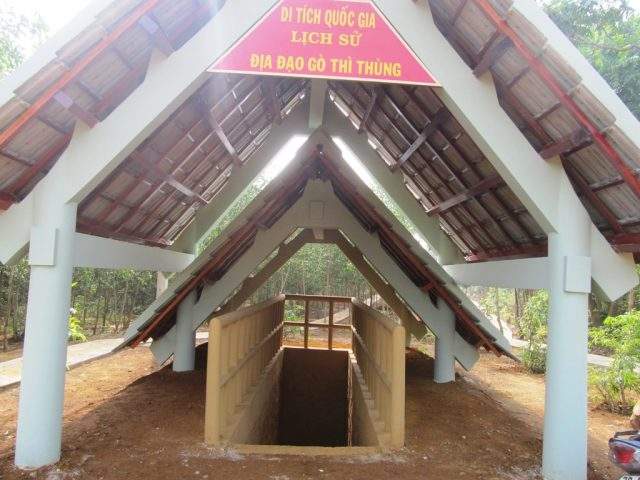
The entrance to the tunnel was spaciously decorated (Photo Collection)
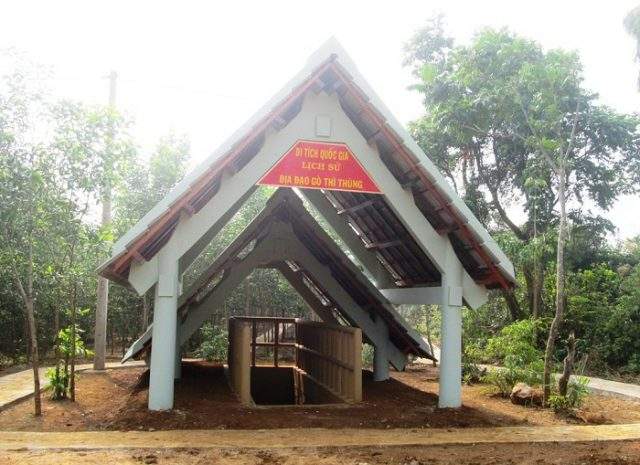
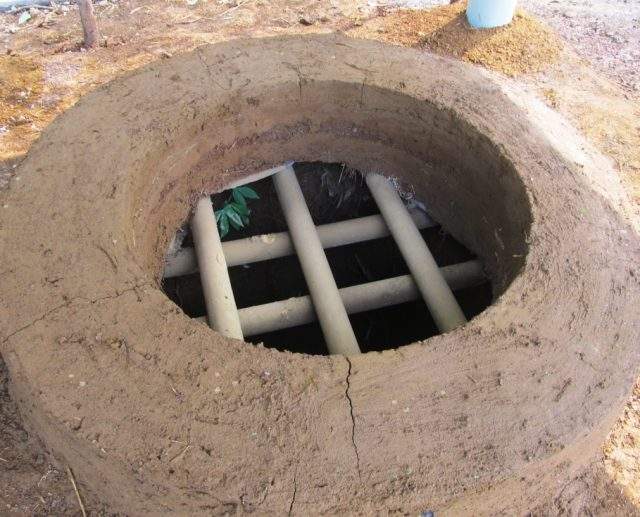
Up to 486 wells have been built here (Picture Collection)
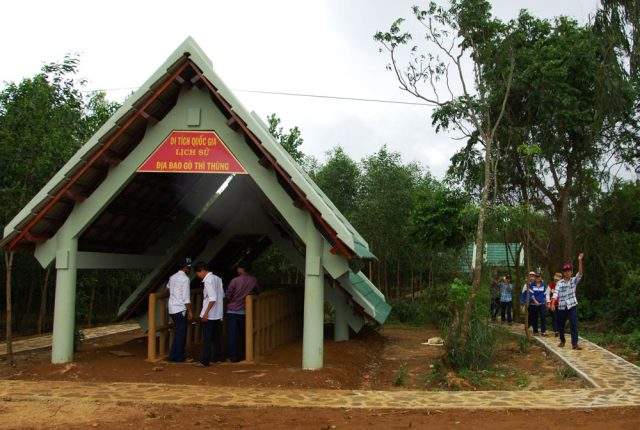
The relic has been restored and embellished as it is today (Photo Collection)
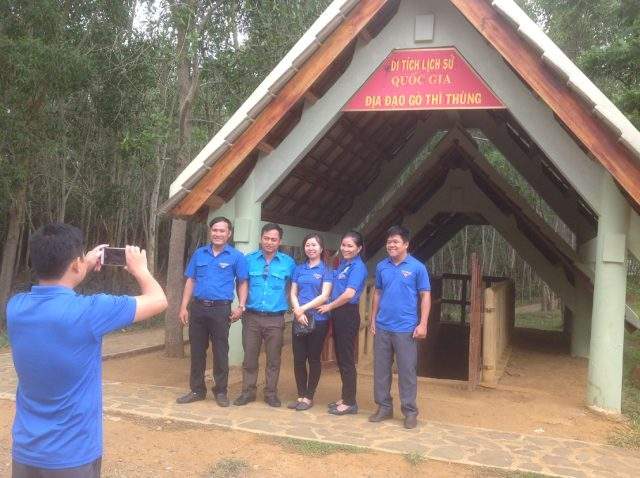
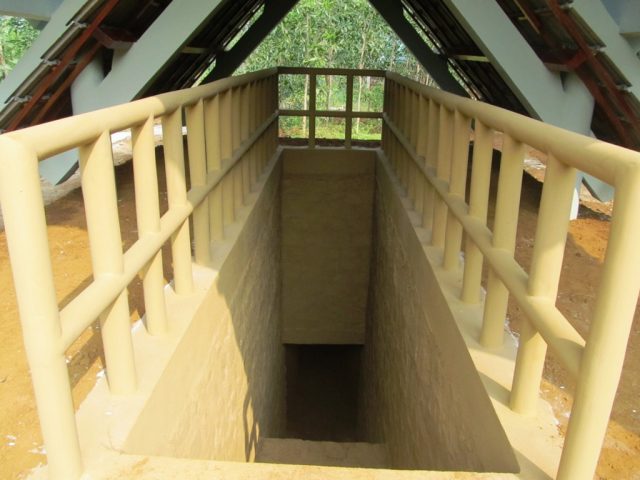
The tunnel to the tunnel was constructed relatively small and narrow (Photo Collection).
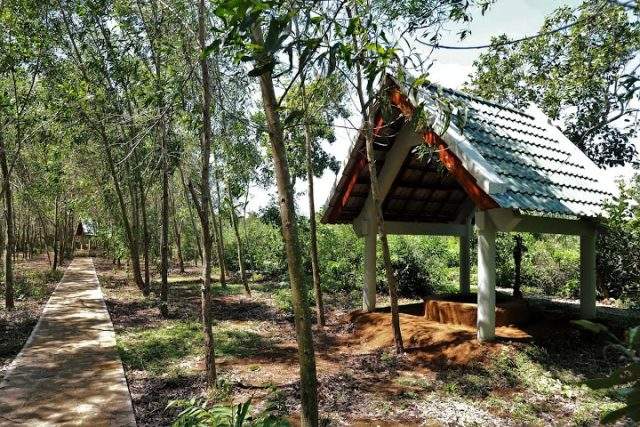
Roads in the ruins have been renewed (Photo Collection)
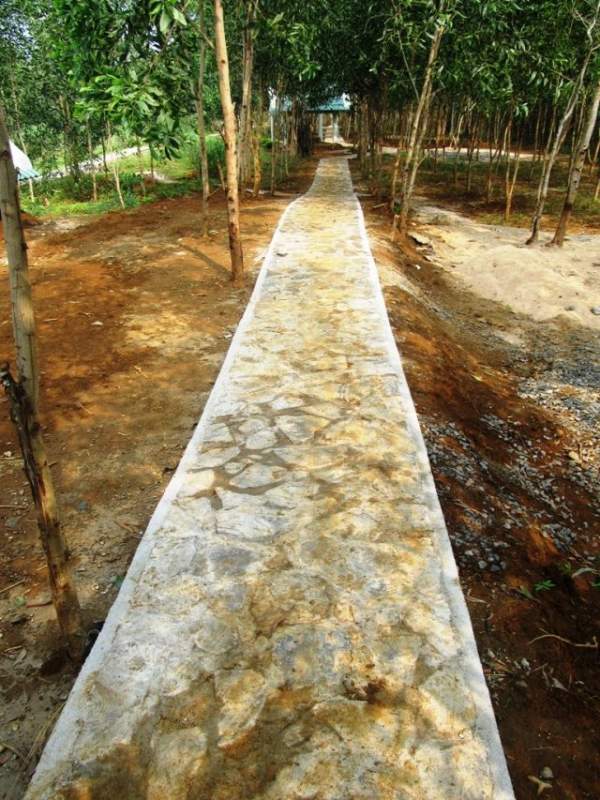
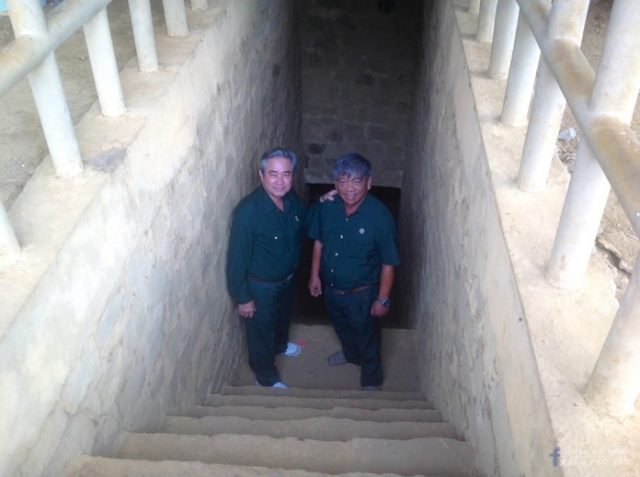
Veterans visit this place (Photo Collection)
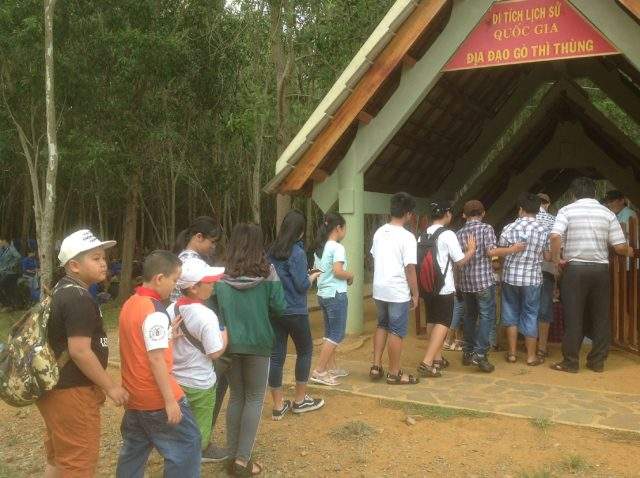
It has become an attractive tourist destination for visitors (Photo Collection).
